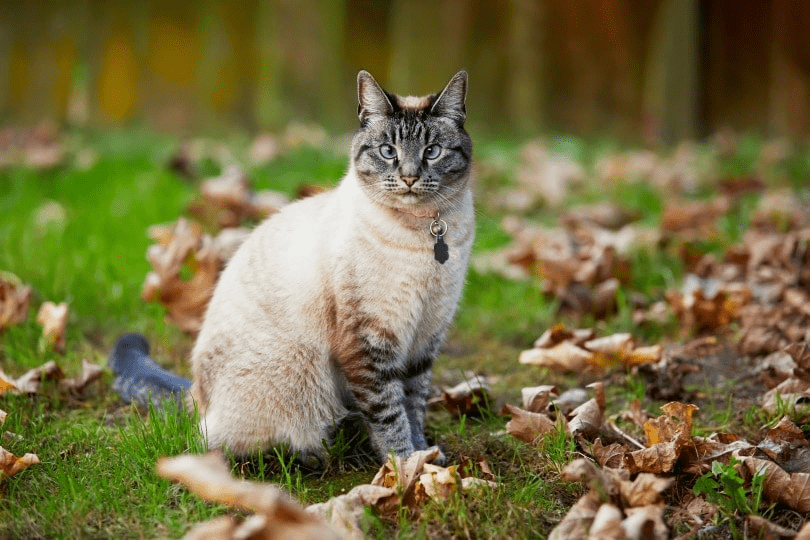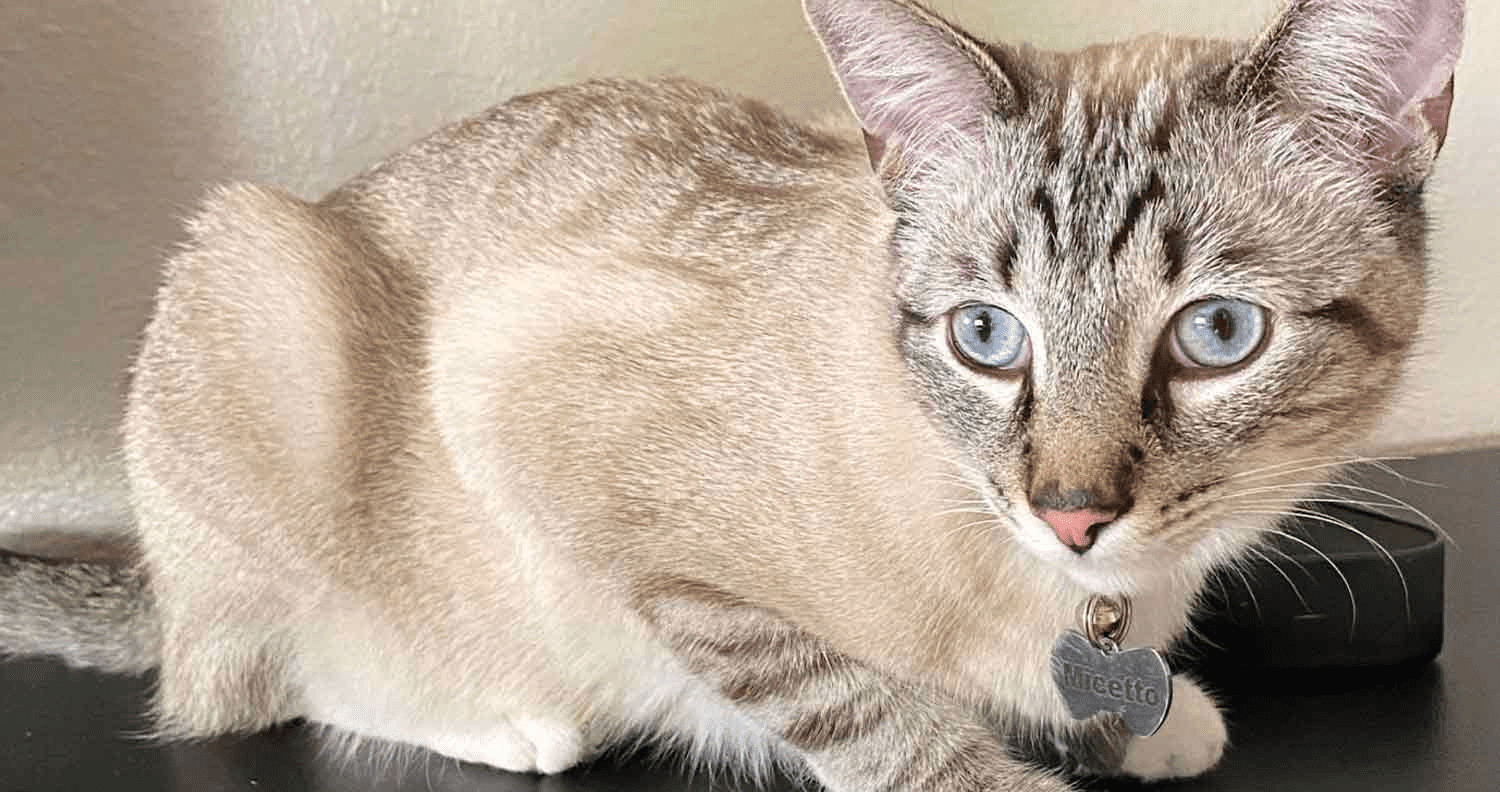The Lynx Point Siamese is a hybrid of tabby and traditional Siamese cats. In addition, they go by the names Tabby Points or Colorpoint Shorthairs.
This breed is a type of common Siamese cat that is quiet and more reserved. They are sociable cats that require little upkeep. The tortoiseshell color is uncommon in this breed.
Brief History of Lynx Point Siamese Cat Breed
In the 1940s or 1950s, the Lynx Point Siamese was created as a man-made breed. The breed was developed by a mix between an American shorthair and a seal point siamese. But it was not well known until the 1960s that it really became popular.
The siamese cat was presented to the London, England-based Governing Council of the Cat Fancy (GCCF) during this time. The GCCF quickly recognized it as a siamese subset.
The Colorpoint Shorthair is a unique breed that is recognized by both the CFA and the Canadian Cat Association. It is essentially a Siamese with additional permitted colors and patterns, such as lynx point. So, instead of looking for a Lynx Point Siamese, try looking for a Colorpoint Shorthair with the same markings.
The tabby markings within the points on the head, legs, and tail, make up the lynx point pattern. Blue, blue-cream, chocolate, chocolate tortie, cream, lilac, lilac-cream, red, seal, and seal-tortie are just a few of the colors available for Lynx Point Siamese.
Given that they go by the names Lynx Point, Tabby Point, and Colorpoints, naming the cat can be challenging. In fact, they are used interchangeably. The name that is used is location-based. Some of these titles are only ways to group the numerous Siamese colors and patterns.
The Lynx Point Siamese cat breed is incredibly beautiful, strong, and athletic. The breed has fine bones, a medium size, and a long, coiled body with tapering lines. This breed’s legs are nicely boned and lengthy and well-muscled.
The back legs are a little bit taller than the front legs. One of the characteristics that distinguish the breed is its wedge-shaped head with a flat forehead and fine nose. The Lynx Point Siamese’s enormous ears are broad at the base and follow the wedge’s lines. The medium-sized, almond-shaped eyes, which are always a rich, bright blue, are directed toward the long, straight nose.
Read Also: Siamese Cat Breed (Felis catus) Description and Complete Care Guide
Lynx Point Siamese Cat’s Health Care

Some purebred cats are more likely to experience specific health problems that have hereditary roots. The Lynx Point Siamese is susceptible to the same health problems as the Siamese and colorpoint shorthair, including congenital heart defects like hypertrophic cardiomyopathy, crossed eyes and other eye issues, renal amyloidosis (a related condition affecting the kidneys), dental issues, breathing problems like asthma and bronchial diseases, and dental problems.
In order to prevent passing on challenges to future generations, professional cat breeders test their adult cats for breed-related health problems. The majority of trustworthy breeders typically provide a health guarantee for their kittens.
These cats have excellent Siamese genes, and their mixed genetic makeup also aids in preventing certain hereditary problems from developing.
Siamese cats from Lynx Point have a lifespan of 15 to 20 years. This is noticeably longer than the majority of cats. Additionally, when given the right care, it is not unusual to see cats live past 20 years.
Given that they have short hair, Lynx Point cats might not shed as much as other cats. These cats are simpler to groom because of their shorter hair. As a result, airborne cat allergies like fur and allergens are less likely to occur.
However, no cat is completely hypoallergenic. Short-haired cats or frequent cleaning might lessen this.
Read Also: Tonkinese Cat Breed (Felis catus) Description and Complete Care Guide
Lynx Point Siamese Cat Breed Grooming and Care Guide

Grooming is made much easier by the Lynx Point Siamese’s short, smooth, and low-maintenance coat. Very little hair is shed from the coat. Use a rubber brush, grooming brush, or soft-bristle brush to remove loose hair once a week. For a smooth, lustrous coat, frequently bathe these cats, who are naturally clean.
Trim your Lynx Point Siamese’s nails once or twice a week, and check the inside of its ears occasionally for any signs of dirt. Avoid putting anything inside the cat’s ears, such as a cotton swab, even if it seems like their ears need cleaning. Instead, clean the ears using pet ear cleanser and a cotton ball if they appear dirty.
If your Lynx Point Siamese shakes its head or scratches its ears, or if the ears seem red, swollen, or unusually dirty, schedule an appointment with your veterinarian for a checkup for ear mites or an ear infection.
The Siamese Lynx Point is quite energetic. To ensure they get adequate exercise, provide a variety of perches, scratchers, and climbing opportunities. Having many scratchers of different kinds will make it more likely that your Lynx Point Siamese will scratch where it should and not on your carpet or couch.
Play sessions with your Lynx Point Siamese are easy to arrange as this breed enjoys it so much. Toys like fluffy mice, jingle balls, interactive toys that move, and puzzle toys that the cat must solve to get a treat should all be tried. The Lynx Point Siamese is a small but powerful breed.
If given adequate time and opportunity to run, climb, and play, this cat tends to do a lot of exercises. It’s a good idea to keep a tight eye on your cat’s weight to make sure they’re remaining slim, even though they are less likely to gain weight than breeds that are more inactive. Ask your veterinarian if you are not sure about your cat’s appropriate weight.
Maintaining a slim body may aid in preventing the development of conditions like diabetes, heart disease, and arthritis in Lynx Point Siamese. Never leave food out all day, as this might result in overeating, always give your cat measured servings of food at scheduled mealtimes like twice daily for adult cats. A nutritious food can be suggested by your Lynx Point Siamese’s breeder or veterinarian.
In conclusion, It is advised that you look for a breeder who takes extra care to meet the kitten’s medical requirements. Always seek out a breeder who gives the animals good care and keeps them secure.
Read Also: Domestic Shorthair Cat Breed Description and Complete Care Guide


Pretty! This has been a really wonderful post. Many thanks for providing these details.
Thank you so much and we are glad that you find our article very helpful